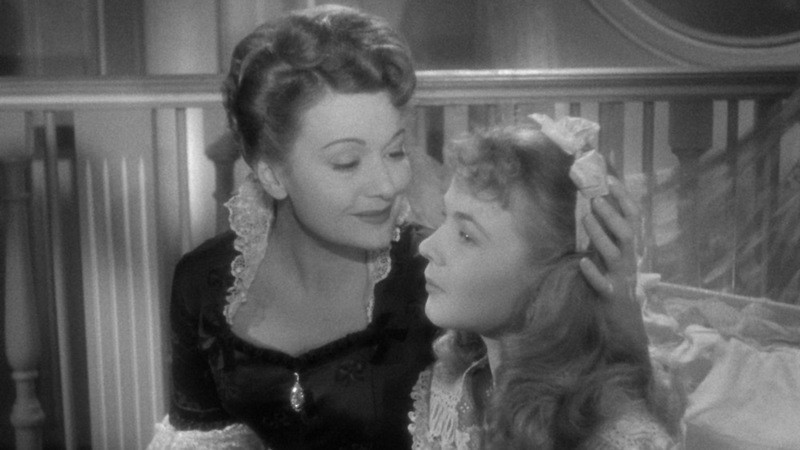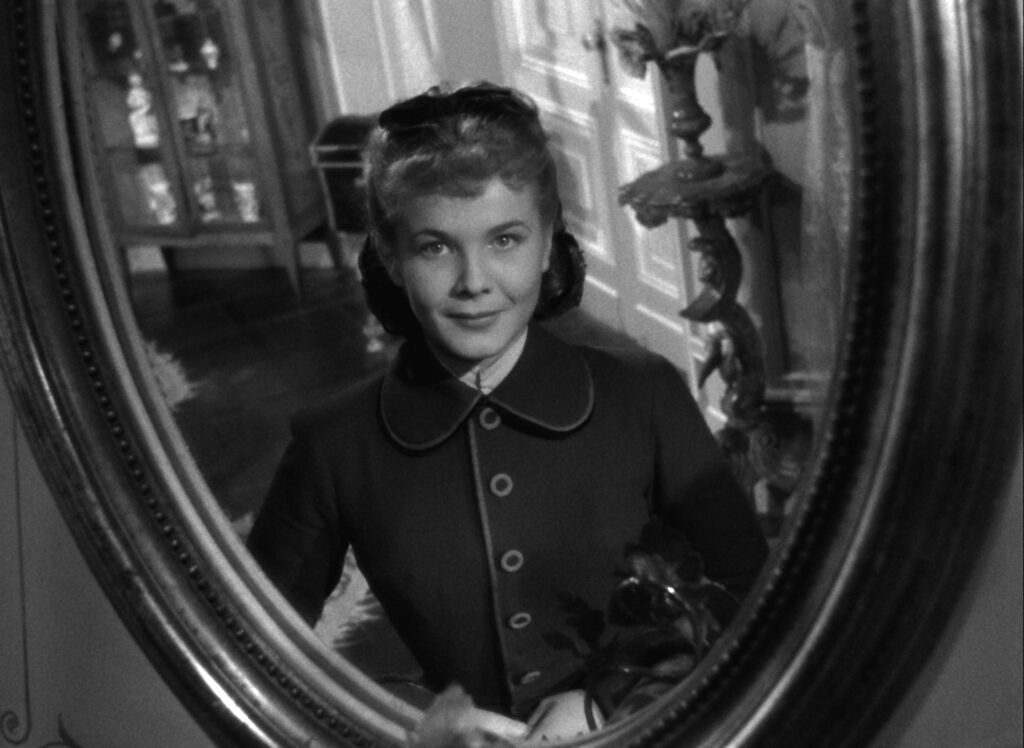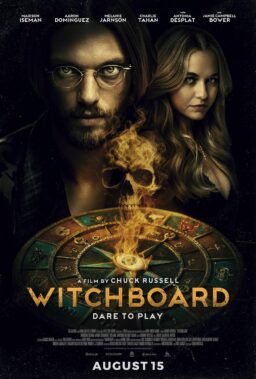This piece was published on August 20, 2019 and is being republished for Women Writers Week.
In the blind spot between avant-garde pioneer Germaine Dulac and the Mother of the New Wave, Agnes Varda—there was Jacqueline Audry. Though certainly not the only post-war French female filmmaker, she was the only one working with any regularity, achieving decent success in the French box office with her resplendently decorated tales of feminine transgression and gender subversion adjusted for mid-century tastes. Beginning with her 1945 debut, “The Misfortunes of Sophie,” Audry directed 16 films by the time she stopped working in the late ‘60s. She was at the height of her powers in the ‘50s, a winning (and losing) streak that paralleled Hollywood’s own woman filmmaker of choice, Ida Lupino. Considering recent efforts to cure cultural amnesia of Lupino’s legacy, you can imagine how history has treated Audry.
In an era when few women got the chance to be behind the camera, Audry’s womanhood worked against her, and also affected how she’s been (or not been) remembered. The long shadow cast by the French New Wave didn’t help, in part because her work embodied precisely the novel adaptation-reliant “cinema of quality” that Francois Truffaut denounced in one of his infamous written kick-offs to the movement. As a result, most of Audry’s work is both in desperate need of restoration and extremely difficult to find, particularly for English speakers in need of subtitles. But fear not: A new 4K restoration of Audry’s 19th century lesbian romance, “Olivia” (1950), will be making the rounds in select venues nationwide; a rare opportunity to see not only one of the most celebrated films in her oeuvre, but a very early piece of queer cinema history.
Before World War II, Audry worked as a script supervisor before graduating to an assistant director position for filmmakers such as Jean Dellanoy, G.W. Pabst, and—perhaps her greatest influence—Max Ophüls. Her work, which always took female characters as its focus, emphasized dialogue, production value, and lush period aesthetics, creating a sense of spectacle and melodrama, and often nostalgically took place in the pre-war Belle Époque. “Olivia,” based on the racy semi-autobiographical novel by Dorothy Bussy, is one such 19th century callback, tracing the tentative love triangles and sublimated sexual urges of an all-girls boarding school in the French countryside.

Olivia (Marie-Claire Olivia) arrives at her new home by carriage, marveling at the foliage, the privilege of a private bedroom, and the expansive grounds where students are at liberty to frolic and explore. Having come from a strict religious finishing school, the coy Olivia is taken with the school’s feminine graces, its pleasing decor, its curriculum of Greek tragedy, Victor Hugo, and El Cid. Being the new girl also comes with the spotlight. Her fellow pupils want so desperately to befriend her, and Miss Cara (Simone Simon, “Cat People”), a gothic fainting woman-sort often taken with a mysterious illness, sees in Olivia the opportunity for a new admirer. Instead, and to Cara’s outrage, Olivia sets her eyes on the stately, sensual Miss Julie (Edwige Feuillère), whose silken voice and teasing gaze has already won her a number of devotees. In fact, the school is divided among the “Carists” and “Julists,” though it’s clear Julie has the upper-hand in this instructress cold war over the hearts of the student body. Olivia, encouraged by Julie’s gestures of intimacy, falls deeply, desperately in love with the older woman.
Well before and after “Olivia,” the exclusively feminine space of the all-girls boarding school has been a site in literature and film that manifests transgressive female desire. The German film by Leontine Sagan, “Girls in Uniform” (1931), about a recently orphaned young woman who grows romantically attached to her teacher, is one of the first of its kind, and an obvious reference point for Audry. A decade after “Olivia,” William Wyler’s “The Children’s Hour” (1961), starring Aubrey Hepburn and Shirley MacLaine as two teachers whose friendship is interpreted as romance by a bitter pupil, tickled Hollywood’s sensibilities upon its release, though both Wyler and Sagan’s films, unlike Audry’s, situate lesbianism as cause for scandal and ruin.
While Audry’s adaptation certainly toned down the novel’s more overt sexuality, “Olivia” remains wildly ahead of its time by coding the school as a utopic space of female erotic expression and performance: Cara and Julie behave like past lovers going through a stormy separation; the math teacher, Madame Dubois, is distinguished by her voracious appetite; a school-wide “ball” sees some of the young women dressed in drag to assume the male role opposite their dance partners. Significantly, Olivia is never punished with tragic moral payback for her yearning over Miss Julie, and while the extremity of her emotions is acknowledged and understood by those around her, she’s never deemed an outcast or punished for them.

Born in September 1908 to an aristocratic family (her great uncle, Gaston Doumergue, served as President, and later Prime Minister of France), Audry enjoyed an elite education in the finest schools in Paris. But she despised academia, and set her sights on the blooming world of cinema instead. Audry’s classical sensibilities—likely indebted to her upbringing—and her cineastic education working alongside costume-loving traditionalists such as Ophüls, heavily informed her work. While it was exactly this style that the New Wavers abhorred, Audry’s refined, nostalgic sense of taste packaged her often scandalous stories as socially-acceptable “women’s films,” wolves in sheep’s clothing that seemingly lacked the real-world impact of their masculine counterparts.
This pigeonholing of Audry’s work, though it granted her leeway in some regard, was also an inhibition to her creative impulses. In Le Cinéma des femmes, Paule Lejeune writes of Audry’s struggles to find funding for an adaptation of Stendhal’s definitively masculine portrait of 19th century France, “The Red and the Black.” Indeed, the film never came to fruition because no one wanted a woman’s interpretation of such an iconic French text. Audry was relegated to making the sorts of films that men found beneath them in artistic value—melodramas, adaptations of novels by women. But Audry would spend her entire career actively fighting against these essentialist notions of gender, by portraying female characters that subverted the assumed power dynamics and expectations of their sex.
As Brigitte Rollet wrote in her 2015 biography: “Her entire career can be read as an illustration that another notion of the masculine and the feminine is possible and conceivable.”* (“Olivia”‘s homoerotic cat and mouse game exemplifies this.) Audry’s biggest hit, “Gigi” (1949), adapted from the novel by Colette and remade as a musical by Vincent Minelli in ‘58, is reminiscent of “Lolita” in its portrayal of pedophilic love. Only the teenage Gigi (played by a rambunctious Daniélle Delorme) was intentionally raised by her two female caretakers to become a demimondaine, i.e. a professional mistress, putting her in a strategic position to contend against her tentative (and much older) love interest, the playboy Gaston. In “La Garçonne” (1957), Andrée Debar is a slick playgirl who sleeps with whoever, and however many men she wants, without the scourge of romantic attachment. And in “Le Secret du chevalier d’Eon” (1960), a man desperate to access his inheritance from his father, who stipulates he and his wife must produce a male heir, disguises his daughter, Genevieve (Debar again), as a boy—an act she maintains from childhood onwards into adulthood.
Audry’s work challenged social constructs dictating how a woman should behave and desire, in part motivated by how she was treated within the industry (most media coverage of her at the time was singularly, exhaustingly fixated on how she, herself, was an exception to the norm, rather than paying serious attention to the quality of her work). But so too was she inspired by the company she kept among feminist intellectuals at the time—Colette, Simone de Beauvoir, and other women working in the film industry. Her sister, Colette Audry, served as a scriptwriter for many of her films, and she often enlisted the help of women editors, producers, and designers as well.
Too often do we look back at cinema history as a straight line of progress from the misogyny of half a century ago to the high-profile calls for inclusion riders of today. But the truth is often obscured by a cultural memory that habitually forgets the triumphs of innovative female film artists like Audry, who resisted the patriarchy while maneuvering their way up its ladders.
*Translated from the French by B. Loayza











